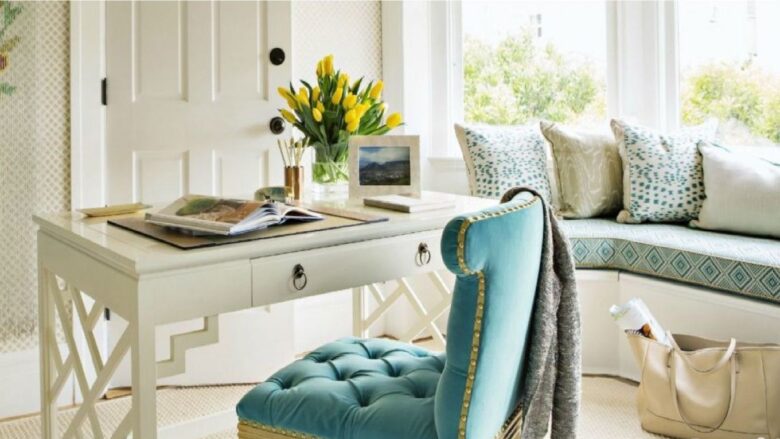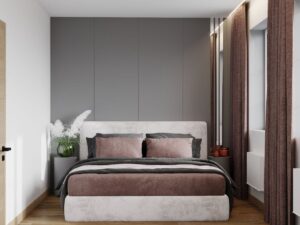The Challenges of Small Space Living
Living in a small home can feel restricting, especially when every square foot counts. Whether you’re in a studio apartment, a shared space, or simply aiming for a more minimalist lifestyle, maximizing the available room is essential for comfort and functionality. This blog explores ten genius solutions for small spaces designed to make your home feel bigger and better organized.
Embracing Minimalism: Decluttering for Space
Decluttering is the first and most crucial step in transforming your small space. Holding onto unnecessary items not only accumulates dust but also eats into your valuable room. By committing to a minimalist lifestyle, you allow yourself to focus only on the things that truly serve a purpose or bring joy. Start by systematically going through drawers and closets with a simple rule: if you haven’t used it in six months, it’s time to toss or donate.
Studies have shown that a decluttered space reduces anxiety and promotes relaxation, particularly in small homes. Imagine the mental lightness you’ll feel by having fewer distractions in a cleaner environment.
Multifunctional Furniture: The Space-Saving Hero
Modern furniture has evolved beyond simple functionality. Pieces like sofa beds, ottomans with hidden compartments, or dining tables that double as work desks are game-changers for small spaces. Consider investing in modular sofas or beds that fold seamlessly into the wall. These designs offer more flexibility, allowing homeowners to optimize every corner of their living areas without sacrificing comfort.
For example, a sofa bed is not just a couch but a resting place for overnight guests, merging hospitality and practicality. Multifunctional items ensure you’re prepared for every scenario without overcrowding your space.
Vertical Storage Solutions: Thinking Up, Not Out
When floor space is limited, the walls come to the rescue. Vertical storage solutions like built-in shelves, hanging racks, and tall cabinets make efficient use of the area above your head. Floating shelves in the kitchen or bedroom help utilize unused sections of the room while leaving the floor clear.
The key is to install these shelves in visually appealing patterns. Arrange books, plants, or decorative knick-knacks to add character while staying functional. With vertical storage solutions, you can make even the smallest room feel taller and more inviting.
Mirror, Mirror: Creating the Illusion of Space
Mirrors do more than reflect your image; they reflect light, which can make any space feel larger and more open. Strategically placed mirrors near windows can amplify natural light, doubling its effect across the room.
Try incorporating floor-length mirrors in the bedroom or mirrored backsplashes in the kitchen. The added depth and brightness enhance spatial perception, making your home feel bigger and brighter than it actually is. Even a single oversized mirror in a living room can work magic.
Light and Color: Brightening and Opening Up Rooms
Colors have a profound impact on how spacious or cramped a space feels. Lighter shades such as whites, creams, and pastels reflect light better than darker tones, creating an airier and more open atmosphere. At the same time, optimizing natural lighting through sheer curtains or uncovered windows ensures that the room feels well-lit throughout the day.
For artificial lighting, opt for recessed lights or wall-mounted fixtures rather than bulky lamps. Even smaller tweaks, such as color-coordinating furniture with surroundings, can visually enlarge your home.
Smart Tech Integration: Streamlining Living
Smart technology can save not just time but also space. Voice-activated assistants like Alexa or Google Home eliminate the need for separate remote controls, speakers, or light switches. Compact gadgets such as foldable laptops or slim smart TVs also blend seamlessly into modern interiors.
Additionally, integrating smart thermostats, lighting systems, or space-utilizing robots like Roombas can make life in smaller homes efficient and clutter-free. By automating daily tasks, these tools free up energy for what truly matters.
Zoning Your Space: Defining Areas Without Walls
When boundaries blur in small homes, zoning becomes essential. Use rugs to define distinct areas like dining or lounging zones. Open bookshelves or folding screens are excellent dividers without closing off airflow or blocking light.
This principle creates psychological order, making even a studio layout feel like multiple rooms. Zoning also encourages purpose-driven organization, ensuring that “workspaces” don’t interfere with “relaxation zones.”
Foldable and Collapsible Items: The Ultimate Convenience
Foldable and collapsible items, such as wall-mounted tables or stackable chairs, bring unparalleled convenience to small spaces. When not in use, they can be stored away neatly, opening up valuable floor space.
Imagine a dining table that folds down from the wall or chairs that can be tucked into slim storage compartments. These solutions are especially handy for entertaining guests, offering flexibility without creating permanent clutter.
Underutilized Spaces: Getting Creative
Often, the hidden gems of small homes lie in underutilized spaces. Think under the bed, above cabinets, or even behind doors. Storage bins designed to slide under furniture offer a great way to pack away off-season clothing or rarely used items.
The inside of cupboard doors can also be fitted with hooks and racks for extra storage. Using these overlooked areas can make a dramatic difference in your home’s functionality without adding new furniture.




